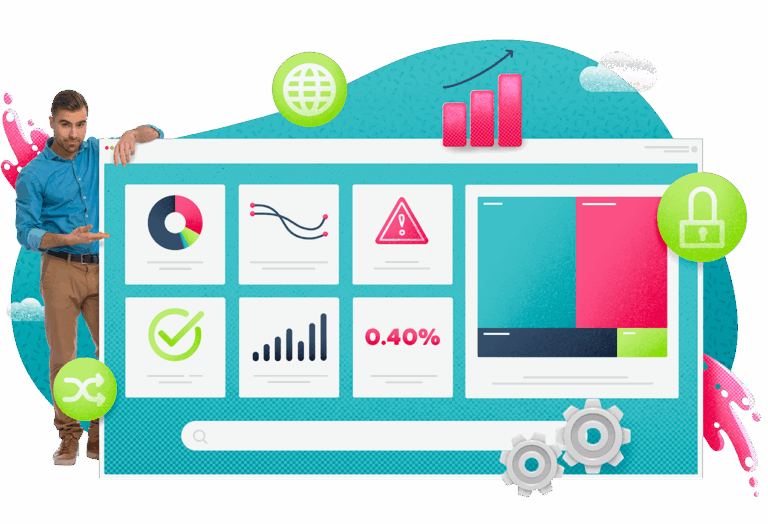In Information Technology Service Management (ITSM) efficiency, reliability, and cost-effectiveness are what matter. This means Total Cost of Ownership (TCO) stands as a pivotal metric. TCO encapsulates the holistic expenses associated with owning, operating, and maintaining IT assets throughout their lifecycle. While it may seem like a straightforward concept, its implications are profound—influencing decision-making processes, resource allocation, and long-term strategic planning within IT organizations.
This blog will explore why the TCO of your ITSM solution matters for both open-source and paid platforms, and how each will impact your business.
Deciphering TCO
At first glance, TCO may appear as simple as adding up the purchase price and maintenance costs of IT assets. However, this view overlooks the intricacies embedded within the TCO framework. Beyond the initial capital expenditure required, there are hidden costs (i.e., implementation, training, support) that can add up quickly. These costs often accumulate over time and can significantly outweigh the upfront investment, especially in complex IT ecosystems.
Taking the time to understand TCO with your ITSM products matters because it leads to:
- Informed Decision Making: TCO empowers IT managers to make informed decisions by providing a comprehensive view of the financial implications associated with different options.
-
Resource Optimization: IT leaders can identify inefficiencies, eliminate redundancies, and streamline operations to minimize overall expenditure without compromising performance or reliability.
-
Risk Mitigation: Through careful analysis, organizations can identify potential risks such as vendor lock-in, security vulnerabilities, or unforeseen maintenance expenses. By proactively addressing these risks, ITSM initiatives can ensure business continuity and mitigate financial uncertainties.Â
- Lifecycle Management: TCO provides a framework for managing each stage effectively. By forecasting costs over the asset’s lifespan, organizations can allocate resources strategically, plan for upgrades or replacements, and avoid unexpected expenses.
- Service Level Agreements (SLAs) Compliance: TCO analysis helps align SLAs with budgetary constraints and operational realities. This enables organizations to negotiate contracts, select vendors, and design service strategies that meet business objectives while minimizing total ownership costs.
Don’t Skip It: What happens if you don’t pay attention to the TCO
Failing to pay attention to Total Cost of Ownership (TCO) can lead to a range of negative consequences for businesses, affecting their financial health, operational efficiency, and long-term sustainability. Here are some potential outcomes of disregarding TCO:
- Budget Overruns: Ignoring TCO may result in unexpected expenses and budget overruns. Without a comprehensive understanding of the total costs associated with technology investments, businesses may underestimate the financial implications, leading to financial strain and resource constraints.
- Poor Return on Investment (ROI): Neglecting TCO can lead to suboptimal investment decisions, resulting in a poor return on investment (ROI). When the total costs outweigh the benefits derived from using the technology, businesses may fail to realize the anticipated value, hindering their ability to achieve strategic objectives and deliver tangible business outcomes.
- Operational Inefficiencies: Software or hardware solutions with high TCO may introduce operational inefficiencies, such as increased downtime, reduced productivity, or performance bottlenecks. Without proper consideration of ongoing maintenance, support, and upgrade costs, businesses may struggle to maintain optimal system performance, leading to disruptions in operations and customer dissatisfaction.
- Limited Scalability and Flexibility: High TCO solutions may lack scalability and flexibility, restricting businesses’ ability to adapt to changing market conditions or scale their operations effectively. Without the flexibility to scale resources up or down as needed, organizations may face challenges in meeting growing demand, seizing new opportunities, or responding to competitive threats.
- Increased Risk Exposure: Ignoring TCO can expose businesses to various risks, including security vulnerabilities, compliance issues, and vendor lock-in. Solutions with high TCO may require significant investments in security measures, regulatory compliance efforts, or exit strategies to mitigate risks effectively. Failure to address these risks can result in data breaches, legal penalties, or disruptions to business continuity.
- Missed Innovation Opportunities: High TCO solutions may divert resources away from innovation and strategic initiatives, limiting businesses’ ability to innovate and differentiate themselves in the marketplace. By prioritizing cost savings over long-term value creation, organizations risk falling behind competitors and missing out on opportunities for growth and innovation.
Neglecting Total Cost of Ownership (TCO) can have far-reaching consequences for businesses, affecting their financial performance, operational efficiency, risk exposure, scalability, and ability to innovate. By overlooking the holistic costs associated with technology investments, businesses may find themselves grappling with budget overruns, poor ROI, operational challenges, increased risk exposure, and missed opportunities for growth and innovation. Paying attention to TCO is essential for making informed decisions, optimizing resource allocation, and ensuring the long-term success and sustainability of your business.
Why does a low TCO matter?
A low Total Cost of Ownership (TCO) for software directly impacts the financial health of an organization by minimizing expenditure associated with software acquisition, deployment, maintenance, and support. This reduction in cost stems from factors such as efficient software architecture, streamlined development processes, and optimized resource utilization. Secondly, a low TCO often correlates with enhanced software efficiency and performance. Software engineered with a focus on TCO tends to exhibit better scalability, reliability, and resource efficiency—resulting in reduced hardware requirements and lower operational overhead.
Low TCO software solutions also typically offer seamless integration capabilities—enabling interoperability with existing systems and minimizing integration complexities. These software solutions are often designed with modular architectures and open standards, facilitating easier customization, updates, and upgrades to ensure long-term sustainability and adaptability to evolving business needs. Prioritizing a low TCO for software not only yields significant cost savings but also fosters technical agility, efficiency, and scalability within the IT ecosystem, ultimately contributing to the organization’s technological resilience and competitive advantage.
Open-Source Software TCO
When considering Total Cost of Ownership (TCO) associated with open-source software (OSS), several unique considerations come into play, reflecting the distinct nature of OSS development, deployment, and support.
|
The Pros |
The Cons |
|
|
- Licensing Costs: One of the primary advantages of OSS is its typically low or non-existent licensing costs. Unlike proprietary software, which often requires upfront license fees and ongoing payments for updates or support, OSS is freely available for use, modification, and redistribution. This can result in significant cost savings, especially for organizations with large-scale or distributed deployments.
Popular open-source ITSM solutions: GitLab, osTicket, and Tarian Service Desk
- Customization and Flexibility: Open-source software offers unparalleled customization and flexibility, allowing organizations to tailor the software to their specific needs and requirements. However, while this flexibility can lead to cost savings by eliminating the need for expensive proprietary solutions, it also introduces additional considerations such as development costs, maintenance overhead, and potential compatibility issues with future updates or extensions.
- Community Support vs. Paid Support: OSS benefits from vibrant communities of developers, contributors, and users who provide support, documentation, and troubleshooting assistance free of charge. While community support can be invaluable for many organizations, particularly smaller ones with limited budgets, it may not always meet the stringent service level agreements (SLAs) or support requirements of larger enterprises. In such cases, businesses may opt for paid support services provided by commercial vendors or third-party organizations, which can incur additional costs but often offer more robust support options.
- Integration and Interoperability: Open-source software ecosystems are diverse and expansive, encompassing a wide range of projects, frameworks, and tools. While this diversity fosters innovation and choice, it can also present challenges in terms of integration and interoperability. Businesses must consider the costs associated with integrating OSS components into their existing infrastructure, ensuring compatibility with other systems, and managing dependencies effectively.
- Maintenance and Lifecycle Management: Like any software, open-source solutions require ongoing maintenance, updates, and lifecycle management to ensure security, stability, and performance. While OSS may offer greater transparency and community-driven development, organizations must allocate resources for tasks such as patch management, version control, and upgrades. Businesses may also need to account for potential risks like project abandonment, community fragmentation, or reliance on individual contributors.
- Training and Skill Development: Adopting open-source software may necessitate investment in training and skill development to ensure that employees possess the necessary expertise to use, administer, and maintain the software effectively. While OSS often boasts user-friendly interfaces and extensive documentation, specialized skills may be required for tasks such as software customization, system administration, or code contributions.
While open-source software can offer compelling advantages in terms of cost, flexibility, and community-driven innovation, organizations must carefully consider the unique TCO considerations associated with OSS adoption. By weighing factors such as licensing costs, customization requirements, support options, integration challenges, maintenance overhead, and skill development needs, businesses can make informed decisions that align with their budgetary constraints, technical requirements, and strategic objectives.
The bottom line is: Most ITSM tools aren’t built to optimize TCO – they are built to be sticky. So the FIRST thing buying organizations should consider when procuring an ITSM tool is TCO. Not realizing the gravity of that is the #1 mistake ITSM buyers make. And the result is that most organizations are overspending.
By understanding the complete financial landscape of IT investments, organizations can optimize operations, mitigate risks, and align their IT strategies with overarching business goals. Embracing TCO not only enhances cost-effectiveness but also fosters innovation and resilience in an increasingly competitive environment. As IT continues to play a pivotal role in driving organizational success, TCO remains a cornerstone of prudent ITSM practices, guiding organizations towards sustainable growth and digital transformation.

Infographic – The status of SMB IT in 2026
Explore how AI, automation & integrated ITSM/ITAM are reshaping IT strategy—at every scale.


